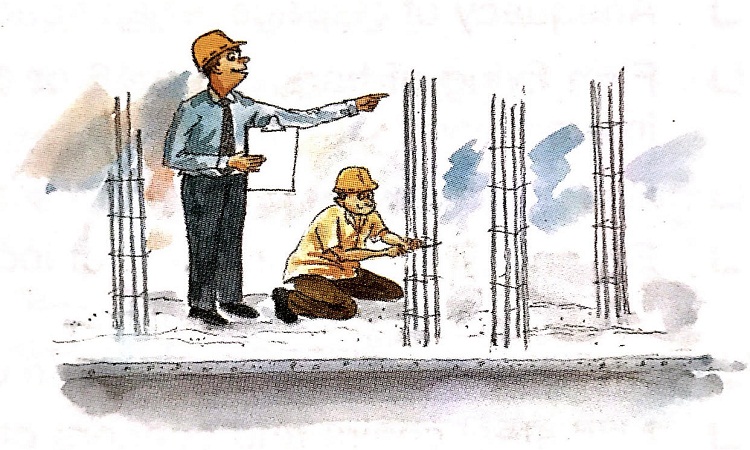Reinforcement Steel plays a vital role in the strength of the concrete structure as well as its durability.
Checklist for Reinforcement Steel –
Material
The following needs to be checked before clearing the material:
- Type (mild steel / high strength deformed or twisted / corrosion-resistant steel)
- Grade (based on chemical and physical requirements)
- Size (diameter)
- Rolling margin
- Identification or paint (color) marks
- Bill/invoice/receipt/letter of the manufacturer for identification of lower quality steel bars rolled from ingots produced in induction furnace ( is important in case of unapproved re-rollers)
- Re-roller or manufacturer – authorized licensee under supervision of Tor-Allis Engineering Services Pvt. Ltd.
- Original test certificate (not a photocopy or Xerox) issued for any quantity of steel supplied – original certificates are half printed and halt embossed to avoid duplication.
- Manufacturer’s test certificate mentions tor or tor steel and nothing else
- All physical and chemical properties in the manufacturer’s test certificate.
- Pitch of the twists and marking indicated on the test certificate
- For every 10 MT of reinforcement steel, one sample is tested in an independent or outside laboratory
- Reinforcement steel should be good for bending and rebending capacity ( is a must if used as dowel bars which have to be bent initially and later straightened)

Cutting, Bending, Tying and Fixing
Following needs to be checked:
- Mechanical equipment is available for straightening the coiled steel and for cutting and bending steel bars.
- Jigs used for manual bending for correct dimensions before going for mass production or production in large quantities.
- The gauge used for checking bar diameter.
- Cutting length
- Steel bars – free from bends and kinks
- Type, diameter (using proper gauge) shape & length (using steel measure tape)
- Cutting schedule
- Bending schedule
- The diameter of mandrel before bending (not greater than (≯) 2d for mild steel and 3d for high yield bars Where “d” is the bar diameter.
- Speed of bending for high yield bars (below 5o C ambient temperatures, steel becomes more brittle)
- Use of latest revisions of drawings and bar bending schedules
- Latest drawings – (superseded drawings and bar bending schedules to be destroyed)
- Bent bars of identical shape, size, and type bundled together and labeled correctly before placing
- Steel surface – free from grease, oil, mud, mould oil, loose mill scales, excessive rust scales, loose concrete and/or ice (necessary for a good bond between steel and concrete)
- Adequacy of clear cover as specified (no tolerance allowed)
- Firm fixing of bars using 16 or 18 gauge soft iron building wire at most intersections
- Spacing between bars within tolerance limits
- Binding wires bent inward or loose ends cut so that they do not protrude out of concrete
- Effective depth, bottom and top cover in slab
- Mild steel chairs and spacers of adequate strength, size & shape (to maintain effective depth and clear cover)
- Top steel bars position in case of cantilever slabs
- Corrosion inhibiting layer over the steel bars (free from cracks, damage and / or scratches)
- Beam-Column junctions reinforcement steel bars – Bunched or spaced properly to avoid congestion
- The layout of steel bars in densely reinforced concrete members planned to suit concrete placing method by bunching the bars (pumping, manual, crane-bucket, etc.)
- Enough space between bars available to place and compact concrete
- Lap length and hook length/angle of bars should be as per drawing
- Welding of bars should be as per drawing or standard details
- Bar bending schedule in line with other approved drawings
- Deviation due to any reason verified by design office
- The radius of bend given to dowel at construction joints – less than 4d plain bars and 6d for deformed bars Where “d” is the diameter of the bar
- Protection of steel bars (when construction work has been held up for a long period)

Checklist for Cover Blocks:
Following essential points are required to be checked:
- Quality of blocks (material, porosity, strength, size, and shape)
- A mix of concrete/quality of any other material used
- Compaction and curing of concrete cover blocks
Checklist for Reinforcement Steel Storage:
Following are important checks needed to ensure proper storage:
- Bars of different types & diameters stored separately
- Bars stored above ground level on a raised platform and free from contamination by materials such as water, mud, oil, and grease
- Protection against high humidity or rain (corrosion prevention)
- For a long duration of storage, bar protected by corrosion inhibiting layer or should be covered with plastic sheets
- Reinforcement should be stacked with sufficient timber support so that the bars do not buckle, bend or sag.
- If the reinforcement is to be stored for a long period of time or where stored in a marine environment or within 10 km of sea, the reinforcement piles should be covered.



